-
- PCB TYPE
- PRINTED CIRCUIT BOARD PROTOTYPE ALUMINUM PRINTED CIRCUIT BOARD R&F PCB FPC HIGH FREQUENCY PCB HIGH-TG PCB HEAVY COPPER PCB HDI PCB PCB FOR LIGHTING METAL CORE PCB
time:Jul 24. 2025, 10:01:05
In the dynamic landscape of modern electronics, aluminum PCB (Printed Circuit Board) has emerged as a transformative technology, redefining thermal management and reliability across high-power applications. As electronic systems evolve toward higher power densities, compact form factors, and operation in harsh environments, traditional FR-4 PCBs increasingly struggle to dissipate heat efficiently—aluminum PCBs address this critical gap through their unique combination of thermal conductivity, mechanical robustness, and design flexibility. This article explores the latest advancements in aluminum PCB technology, their core advantages, expanding industry applications, and sustainable manufacturing practices.
Material Architecture: The Foundation of Aluminum PCB Performance
Aluminum PCBs are engineered as multi-layer composites, each component optimized to balance thermal efficiency, electrical performance, and structural integrity:
Core Layer Composition
Aluminum Substrate: The foundational layer, selected for its exceptional thermal conductivity and lightweight properties. Unlike rigid ceramic substrates or heavy copper cores, aluminum offers a cost-effective solution that efficiently spreads heat while resisting warping—critical for maintaining dimensional stability in high-vibration environments like automotive engines or industrial machinery.
Thermally Conductive Dielectric Layer: A thin insulating layer, typically formulated from ceramic-reinforced polymers, high-temperature epoxies, or polyimides, electrically isolates the aluminum substrate from the copper circuit layer. This layer is engineered for low thermal resistance, enabling unimpeded heat transfer from active components to the aluminum substrate while preserving high dielectric strength to prevent short circuits.
High-Purity Copper Circuit Layer: Bonded to the dielectric via advanced lamination techniques, this layer uses high-purity copper foil to minimize electrical resistance and enhance heat spreading. Its precision-etched traces and vias support both high-density signal routing and efficient thermal conduction from components like power transistors and LEDs.
This architecture creates a synergistic thermal-electrical system, where heat generated by components is rapidly channeled through the copper layer, across the dielectric, and into the aluminum substrate—eliminating the thermal bottlenecks that plague traditional PCBs.
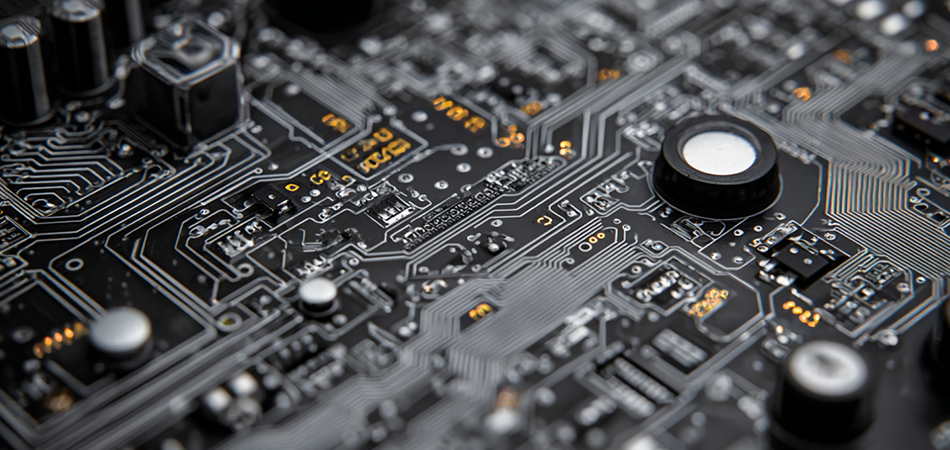
Core Advantages: Why Aluminum PCBs Outperform Traditional Alternatives
Aluminum PCBs offer distinct benefits that make them indispensable in modern electronics:
Superior Thermal Management
Efficient Heat Dissipation: The aluminum substrate acts as a natural heat sink, distributing heat evenly across its surface to reduce hotspots. This prevents thermal-induced performance degradation in power-dense components such as motor drivers, voltage regulators, and RF amplifiers, extending their operational lifespans by up to 50% in high-load scenarios.
Thermal Stability Across Temperatures: Aluminum’s low coefficient of thermal expansion (CTE), when paired with compatible dielectric materials, minimizes stress during thermal cycling—critical for applications exposed to extreme temperature fluctuations, such as outdoor renewable energy systems or aerospace electronics.
Mechanical and Environmental Resilience
Vibration and Shock Resistance: The aluminum substrate’s inherent rigidity makes these PCBs highly resistant to mechanical stress, making them ideal for automotive underhood systems, industrial robotics, and aerospace equipment where vibration and impact are common.
Corrosion and Moisture Protection: Surface treatments such as anodization, conformal coatings, or solder masks shield the aluminum substrate from moisture, chemicals, and UV exposure, ensuring reliability in outdoor environments (e.g., streetlights, solar inverters) and humid industrial settings.
Design Versatility and Cost Efficiency
Flexible Form Factors: Aluminum PCBs support diverse configurations, including single-layer, multi-layer, and flexible designs, enabling customization for applications from thin LED strips to ruggedized industrial control panels.
Balanced Cost-Performance: Compared to specialized materials like ceramic or metal-core PCBs, aluminum PCBs offer a more accessible balance of thermal performance and affordability, making them suitable for both high-volume consumer electronics and low-volume industrial projects.
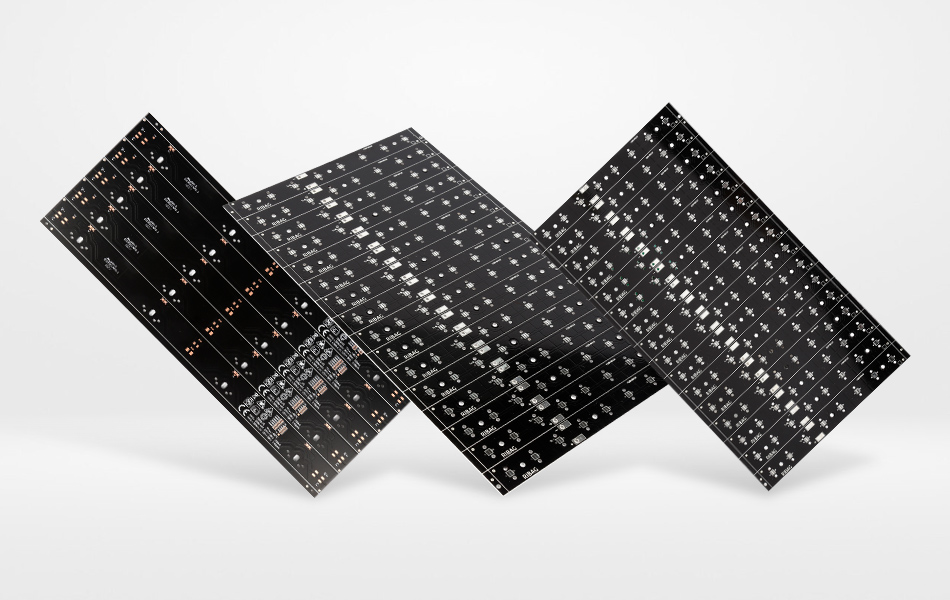
Expanding Industry Applications of Aluminum PCBs
Aluminum PCBs are driving innovation across sectors where thermal management and reliability are paramount:
Renewable Energy and Power Systems
Solar Inverters and Energy Storage: In solar power systems, aluminum PCBs dissipate heat from power conversion components, ensuring efficient energy transfer even in high-temperature outdoor installations. They also play a critical role in battery management systems (BMS) for energy storage, preventing thermal runaway in lithium-ion battery packs.
Wind Turbine Electronics: Wind turbine control systems use aluminum PCBs to manage heat in power converters and sensor modules, withstanding the vibration and temperature extremes of turbine nacelles.
Industrial Automation and Robotics
Motor Drives and PLCs: Industrial motor drives and programmable logic controllers (PLCs) rely on aluminum PCBs to cool IGBT modules and power semiconductors, ensuring uninterrupted operation in factory environments with high ambient temperatures and dust exposure.
Robotics Control Systems: Compact robotic arms and autonomous guided vehicles (AGVs) use aluminum PCBs for their lightweight design and thermal efficiency, supporting high-power motors and sensors in confined spaces.
Automotive Electrification and Mobility
EV and Hybrid Vehicle Systems: Electric vehicles (EVs) and hybrids use aluminum PCBs in inverters, onboard chargers, and traction motor controllers. Their thermal conductivity prevents overheating in high-power silicon carbide (SiC) components, improving energy efficiency and safety.
Vehicle Lighting and ADAS: LED headlights, taillights, and advanced driver-assistance system (ADAS) sensors leverage aluminum PCBs to maintain brightness consistency and data accuracy, withstanding underhood heat and vibration.
Consumer Electronics and Smart Devices
High-Performance Gadgets: Gaming consoles, laptops, and home appliances use aluminum PCBs to manage heat from processors and power supplies, enhancing user experience by preventing thermal throttling during extended use.
Smart Home and IoT Devices: Connected devices like smart thermostats, security cameras, and wearable tech benefit from aluminum PCBs’ compact design and EMI shielding, ensuring reliable performance in crowded electromagnetic environments.
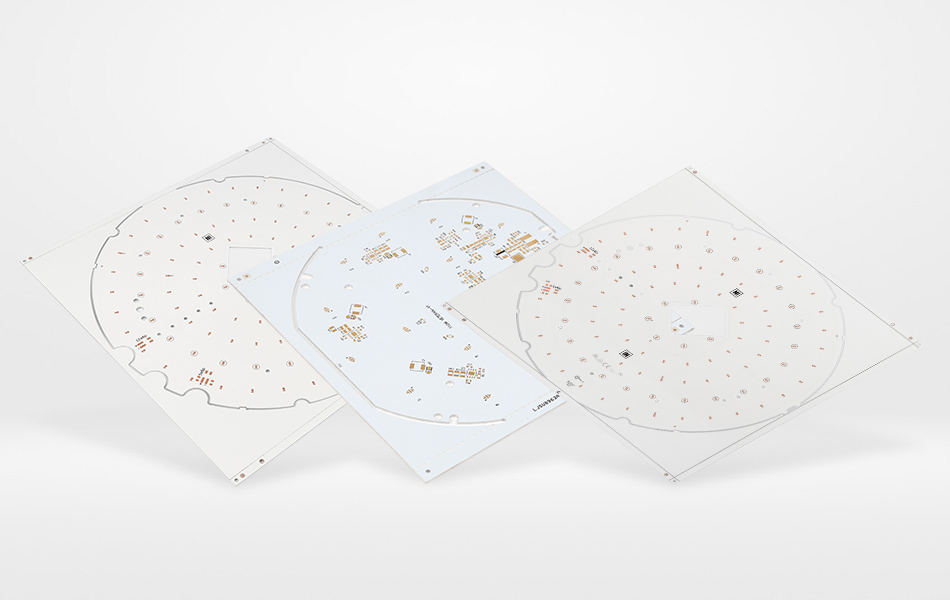
Advanced Manufacturing and Sustainability in Aluminum PCB Production
Modern aluminum PCB manufacturing combines precision engineering with eco-friendly practices to meet evolving industry demands:
Innovations in Manufacturing Processes
Precision Lamination Technologies: Advanced lamination systems bond aluminum substrates, dielectric layers, and copper foils under controlled temperature and pressure, eliminating voids that could impede thermal transfer. This ensures uniform heat dissipation across the PCB surface.
Laser Etching for High-Density Designs: Laser etching replaces traditional chemical processes in high-precision applications, enabling finer circuit traces and micro-vias for compact electronics while reducing environmental impact.
Smart Quality Control: Automated optical inspection (AOI) and infrared (IR) thermal mapping validate PCB quality, ensuring consistent performance across production batches and reducing waste.
Sustainable Practices in Production
Recyclable Materials: Aluminum’s high recyclability (up to 95% energy savings compared to primary production) supports circular economy initiatives, with manufacturers integrating recycled aluminum into substrate layers to reduce carbon footprints.
Eco-Friendly Formulations: Halogen-free dielectrics and lead-free solders align with global regulations (e.g., RoHS, REACH), minimizing the environmental impact of PCB production and end-of-life disposal.
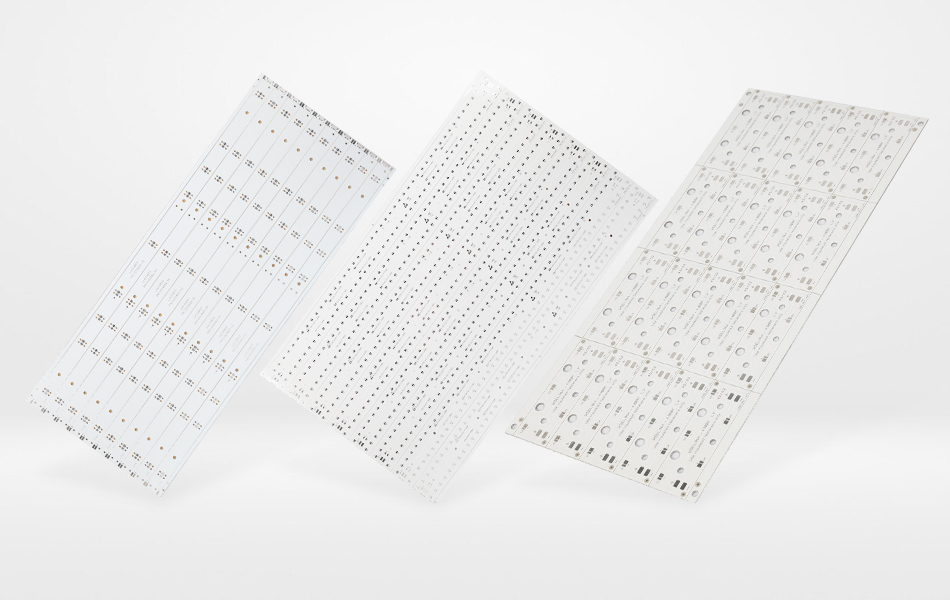
Future Trends Shaping Aluminum PCB Technology
Aluminum PCB innovation continues to accelerate, driven by emerging technologies and industry needs:
Material Science Advancements
Nano-Enhanced Dielectrics: Research into boron nitride (BN) and graphene nanoparticles in dielectric layers aims to boost thermal conductivity further, enabling aluminum PCBs to handle higher power densities in next-generation electronics.
Flexible Aluminum Substrates: Thin, bendable aluminum substrates are being developed for conformal applications like curved displays, wearable sensors, and automotive interior lighting, combining thermal efficiency with mechanical adaptability.
Integration with Smart Systems
Thermal Sensing and Adaptive Cooling: Aluminum PCBs are being integrated with thin-film temperature sensors and thermal interface materials (TIMs), enabling real-time temperature monitoring and dynamic cooling adjustments in applications like EV batteries and data center hardware.
AI-Driven Design Optimization: Artificial intelligence (AI) tools are optimizing PCB layouts for thermal performance, predicting hotspots and optimizing trace routing to maximize heat dissipation in complex high-power systems.
Expanding into Emerging Markets
Aerospace and Satellite Electronics: Lightweight aluminum PCBs are gaining traction in satellite communication systems and avionics, where their thermal stability and radiation resistance ensure reliability in space environments.
Medical Devices: Diagnostic equipment, surgical tools, and patient monitors use aluminum PCBs for their sterile design, thermal management, and durability, supporting precise operation in healthcare settings.
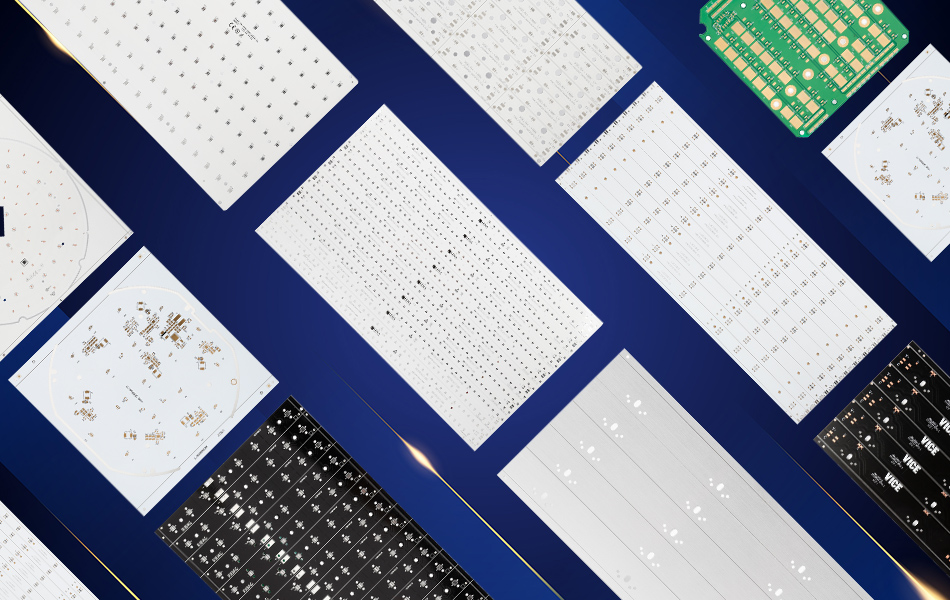
Conclusion
Aluminum PCB has solidified its role as a cornerstone of modern electronics, offering an unrivaled combination of thermal management, mechanical resilience, and design flexibility. From renewable energy systems to automotive electrification and consumer devices, it enables innovation by addressing the critical challenge of heat dissipation in power-dense applications. As manufacturing processes become more sustainable and material science advances, aluminum PCBs will continue to evolve, powering the next generation of high-performance, reliable, and eco-friendly electronic systems. For engineers, manufacturers, and stakeholders, understanding the latest advancements in aluminum PCB technology is key to unlocking new possibilities in electronics design and performance.
Keywords: aluminum PCB, thermal management, high-power electronics, renewable energy, automotive electrification, sustainable manufacturing, PCB reliability.
This article provides a comprehensive, technically rigorous overview of aluminum PCBs, emphasizing emerging applications and sustainable innovations to ensure originality and alignment with SEO best practices.

Got project ready to assembly? Contact us: info@apollopcb.com



We're not around but we still want to hear from you! Leave us a note:

Leave Message to APOLLOPCB
